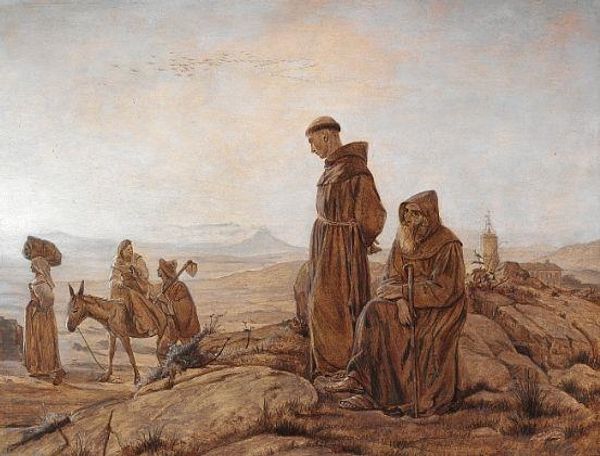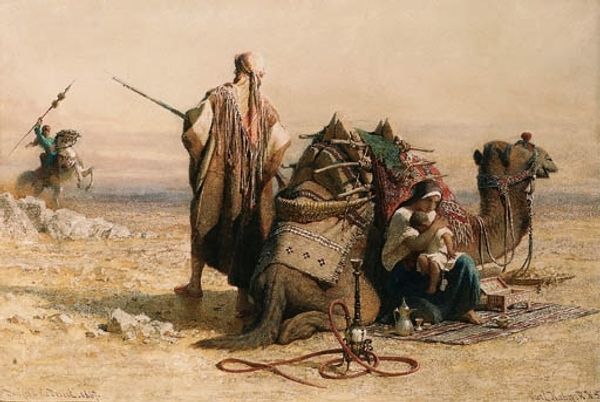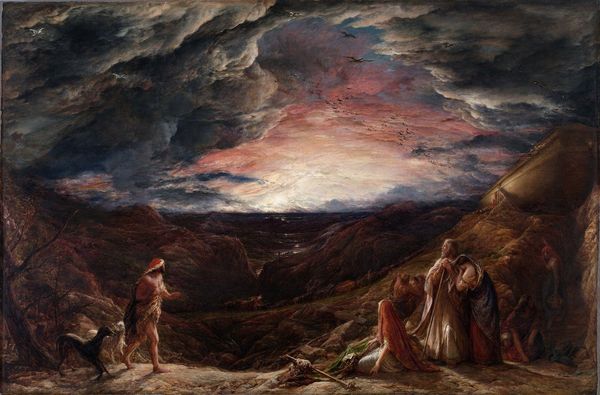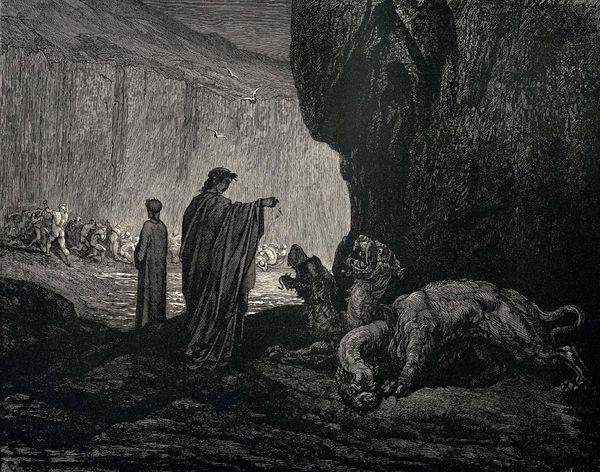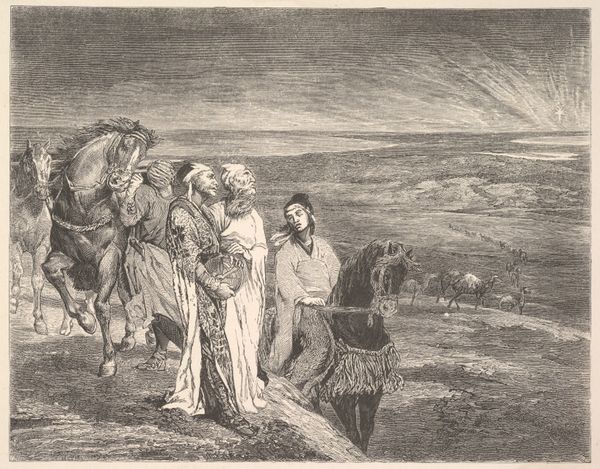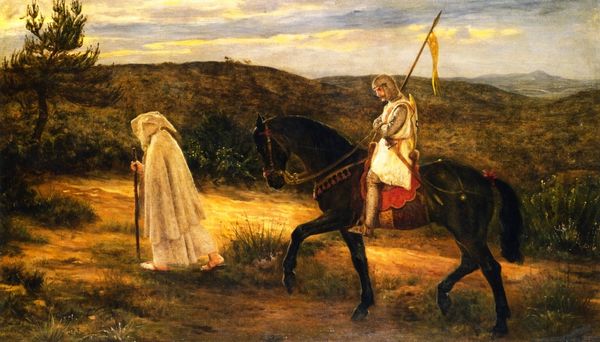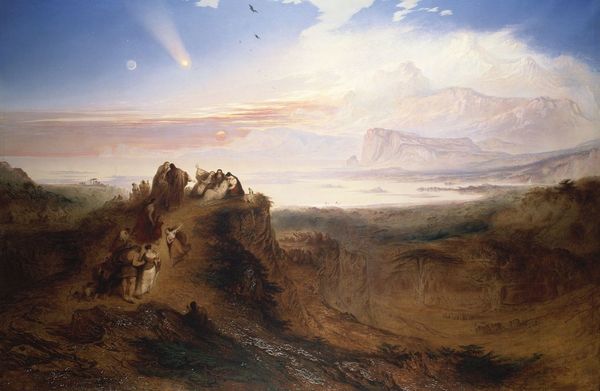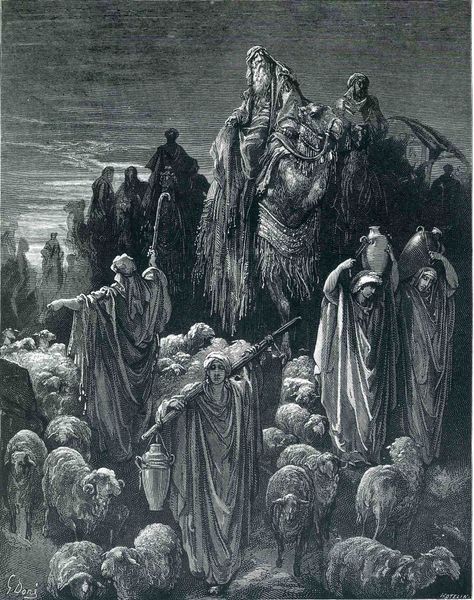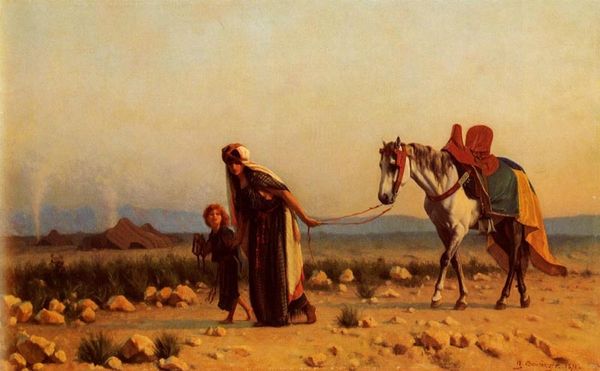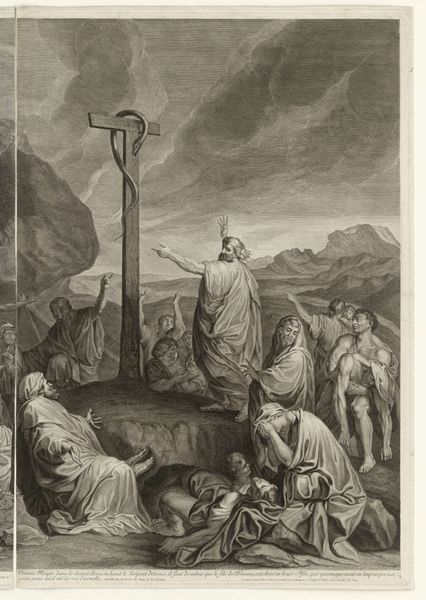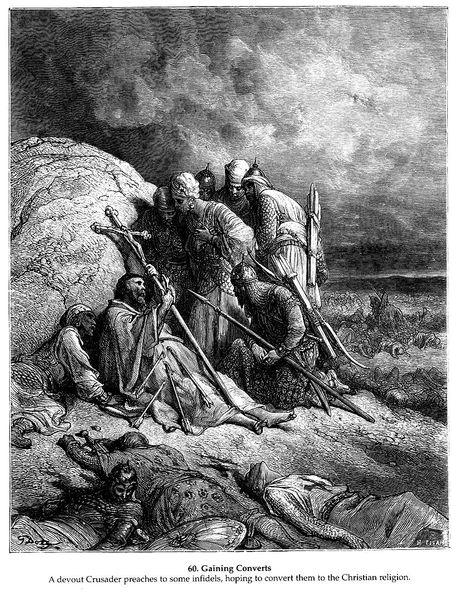
Copyright: Public domain
Curator: The muted tones immediately create a somber mood. The almost monochromatic rendering and soft-edged forms convey a sense of weariness, wouldn't you say? Editor: Indeed. Let's delve into Alexandre-Gabriel Decamps' "The Flight into Egypt," crafted around 1860. Decamps, deeply affected by his travels to the Near East, often chose orientalist and biblical subjects. What do you make of its place within that context? Curator: "The Flight into Egypt" holds strong allegorical weight during this era. Think about France's colonial engagements. Depicting a holy family seeking refuge in a foreign land mirrors anxieties about displacement, the treatment of outsiders, and religious persecution, wouldn't you agree? Editor: Without question. Formally, the composition leads your eye from the foreground figures toward the distant pyramids. Decamps' brushwork creates atmospheric depth and enhances the narrative's feeling of a long, arduous journey. The light catches the figures just so, drawing you in… Curator: It is a loaded image. Its artistic success comes not just from skillful rendering of light and form but also from Decamps tapping into contemporary concerns regarding colonialism, the relationship with the “Orient”, and France’s global role. The painting subtly critiques these dynamics, offering an intimate portrayal amidst a landscape burdened with history. Editor: I see your point, its creation and the artist's own influences reveal an interesting intersection of belief and artistic approach to cultural identity. Thank you. Curator: Thank you as well. It's an invitation to question narratives—both artistic and historical.
Comments
No comments
Be the first to comment and join the conversation on the ultimate creative platform.
